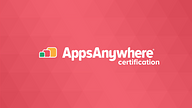Certified Packaging Associate (CPA)

Overview
This course provides delegates with the knowledge and skills required to virtualize most apps with Cloudpaging Studio 9. Delegates will build on their existing packaging skills with best practice approaches, and learn how to troubleshoot common issues in the creation of virtualized appsets.
This course also teaches delegates how to take advantage of advanced features of Cloudpaging Studio, to deliver more compatible and better performing appsets. App Events, patching, prefetching and local paging are all covered on this course.
COURSE CODE: S2-9092

-
Platform
Microsoft Windows
-
Technology
Cloudpaging Studio
-
Length
5-Days or 3-Days Accelerated
-
Delivery Method
Lab/Classroom (on-site)
-
Language
English
-
Participants
Maximum 8 Delegates
Audience profile
This course is for Information Technology professionals who use Cloudpaging Studio to package apps into virtual appsets. Additionally, this course builds skills for third and fourth-line engineers who support Windows desktop and BYOD.
Certification
Course delegates have the opportunity to validate their skills by taking the AppsAnywhere Certified Packaging Associate (CPA) Certification, and may then continue to further training towards the Certified Packaging Expert (CPE) Certification. Those with the CPE Certification can go on to earn Accredited Master Packager (AMP) status, awarded annually to highly-skilled packagers who contribute to the S2 Library.
At course completion, delegates will be able to;
- Take advantage of new features in Cloudpaging Studio
- Adopt best practice approaches to app virtualization
- Improve appset performance and the end-user experience
- Understand the more advanced features of Cloudpaging Studio
- Use scripting techniques and Custom App Events (CAEs)
- Patch existing appsets to make small changes and updates
- Resolve common issues with virtual appsets
Course Outline
- Overview of new features in Cloudpaging Studio 9.1
- Best practice approached to appset creation and deployment
- Advice on dealing with prerequisites and interoperability
- Best practice advice on how to configure a packaging VM
Lab: Configure your virtual machine with Cloudpaging Studio 9
- The packaging process
- Managing studio projects
- Encryption and compression
- Introduction to Workspace Templates with Cloudpaging Studio
- Importing and applying a Workspace Template
Lab: Cloudify Audacity or VLC, using a Cloudpaging Studio Workspace Template
- Disabling app updates
- Capturing first launch
- Application suites and shortcuts
- Preserving app settings
Lab: Capturing and optimizing Review Manager
- Using layers
- Capturing prerequisites in Layer 4
- Global security settings and overrides
- File security settings
Lab: Capturing OpenOffice and Java (Layer 4)
- Using CAEs (Custom App Events)
- App event triggers
- Dynamically adding firewall rules
- Using app events to activate software licenses
- Troubleshooting issues with app events
Lab: Configuring app events for SQL Management Studio
- Removing unnecessary registry keys
- Virtual file system performance
- Performance settings
- Local paging
- Prefetching
- Using dependencies
Lab: Creating a local paging file and prefetch for Unreal Engine
- Best practice for patching and updating appsets
- Patching an appset
- Deploying a patch / new version
Lab: Patch Audacity to include a new plug-in
- Definitive testing
- Troubleshooting log files
- Alternatives to launch commands
- Correct use of Layers 1 and 2
- Roaming profile and folder redirection
- Configuring services
- Troubleshooting tools
- Sandboxing
- Understanding merged folders
- Restarting the print spooler
Lab: Various
Expected Outcomes
- Understand and avoid the common mistakes made after 6-12 months of packaging
- Understand and make use of new features in Cloudpaging Studio 9.0 and Cloudpaging Player 9.0
- Configure the optimal environment for capturing of app installers
- Correctly set compression and encryption on packages
- Follow a best practice methodology in the creation of virtual appsets
- Follow recommended conventions for Cloudpaging Projects and repository management
- Take advantage of reusable templates
- Optimize application settings and delivery for the best user experience
- Use virtual layers correctly
- Improve appset performance using a range of approaches and features
- Understand App Events and how to use them (for software license activation)
- Patch applications and deploy updates and new versions
- Test applications effectively and perform troubleshooting steps
Prerequisites
Before attending this course, delegates must have:
- Existing knowledge of Cloudpaging Studio
- Experience of packaging intermediate apps
- Understanding of Cloudpaging Studio and Player
- Basic scripting experience
- Understanding of Windows client operating system essentials (such as Windows 7, 8 or 10)
Course requirements
This course requires that delegates have access to:
- A computer lab (for ideal conditions)
- One PC each, for packaging workshops (this can be a physical or a remote machine)
- Windows-based virtual machines running Cloudpaging Studio
- Windows-based virtual machines running Cloudpaging Player

